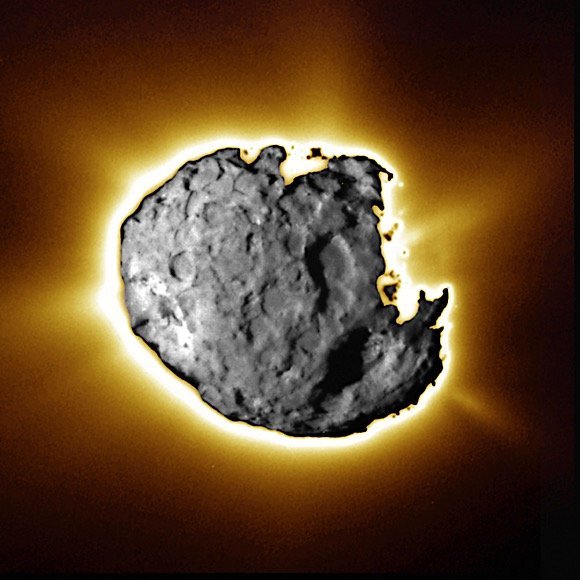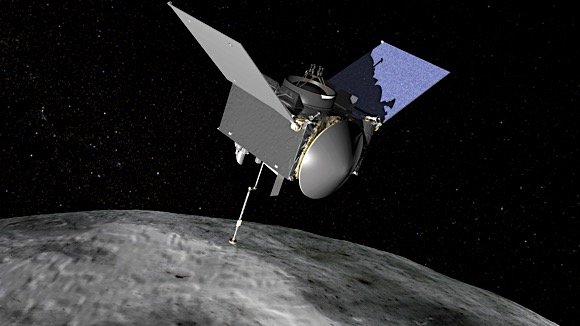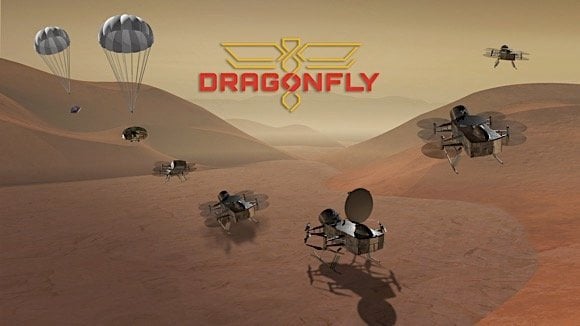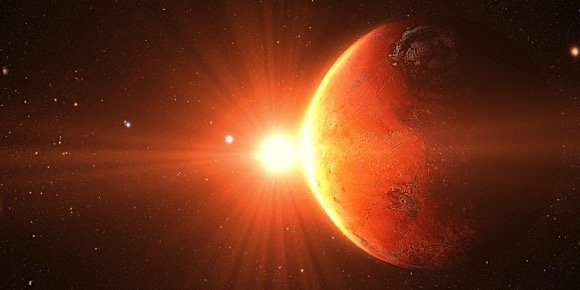
NASA has selected two finalist concepts for a robotic mission that is set to launch in 2020. The competition featured a series of concepts limited to the following six mission themes:
- Comet surface sample return
- Lunar south pole-Aitken Basin sample return
- Ocean worlds (Titan and/or Enceladus)
- Saturn probe
- Trojan asteroid tour and rendezvous
- Venus in situ explorer
Twelve proposals were submitted to NASA in April under a New Frontiers program, and the proposals were put through an extensive and competitive peer review process. The two finalists, a comet sample retrieval robot and a drone-like rotorcraft, were chosen and announced by NASA on Wednesday.

Comet Astrobiology Exploration Sample Return (CAESAR)
One finalist concept is the CAESAR mission, which will acquire a sample from the nucleus of comet Churyumov-Gerasimenko and return it safely to Earth. Comets are small chunks of space debris consisting of leftover materials from planets, interstellar clouds, ancient stars, and even the birth of our solar system. This makes them excellent subjects for scientific study, as they can provide valuable insight into the formation of these comets and of Earth, including the origins of Earth’s lifeforms.

Dragonfly
The second finalist mission includes a dual-quadcopter, Dragonfly, which will take advantage of the environment on Saturn’s largest moon, Titan, to fly to multiple locations, some of which are hundreds of miles apart. While exploring Titan’s surface, Dragonfly will sample materials and determine surface composition to investigate the organic chemistry and habitability of Titan, as well as monitor atmospheric and surface conditions, and perform seismic studies.
Thomas Zurbuchen, associate administrator for NASA’s Science Mission Directorate in Washington expressed excitement for the ongoing process and the opportunity for the future mission. “This is a giant leap forward in developing our next bold mission of science discovery,” said Zurbuchen. “These are tantalizing investigations that seek to answer some of the biggest questions in our solar system today.”
The missions will receive funding through the end of 2018 to further develop and mature their concepts. In spring of 2019, one of the concepts will be chosen to proceed with subsequent mission phases, making it the fourth in NASA’s New Frontiers portfolio. The New Frontiers program is a series of principal investigator-led planetary science investigations, including the New Horizons mission to Pluto, the Juno mission to Jupiter, and the OSIRIS-REX mission to collect a sample of the asteroid Bennu.

NASA Selects Two Other Missions for Funding
In addition to the two finalists that will prepare for possible selection for the 2020 mission, NASA also chose two mission concepts that will receive funding in order to prepare them for future mission competitions.
Enceladus Life Signatures and Habitability (ELSAH)
The ELSAH mission concept will be funded, allowing it to develop cost-effective techniques that limit spacecraft contamination and enable life-detection measurements on cost-capped missions.

Venus in Situ Composition Investigations (VICI)
The VICI mission concept will receive funding to further develop the Venus Element and Mineralogy Camera to operate under the harsh conditions on Venus. The mission uses an instrument featuring lasers designed to measure the mineralogy and elemental composition of rocks on the surface of Venus.

Source:































